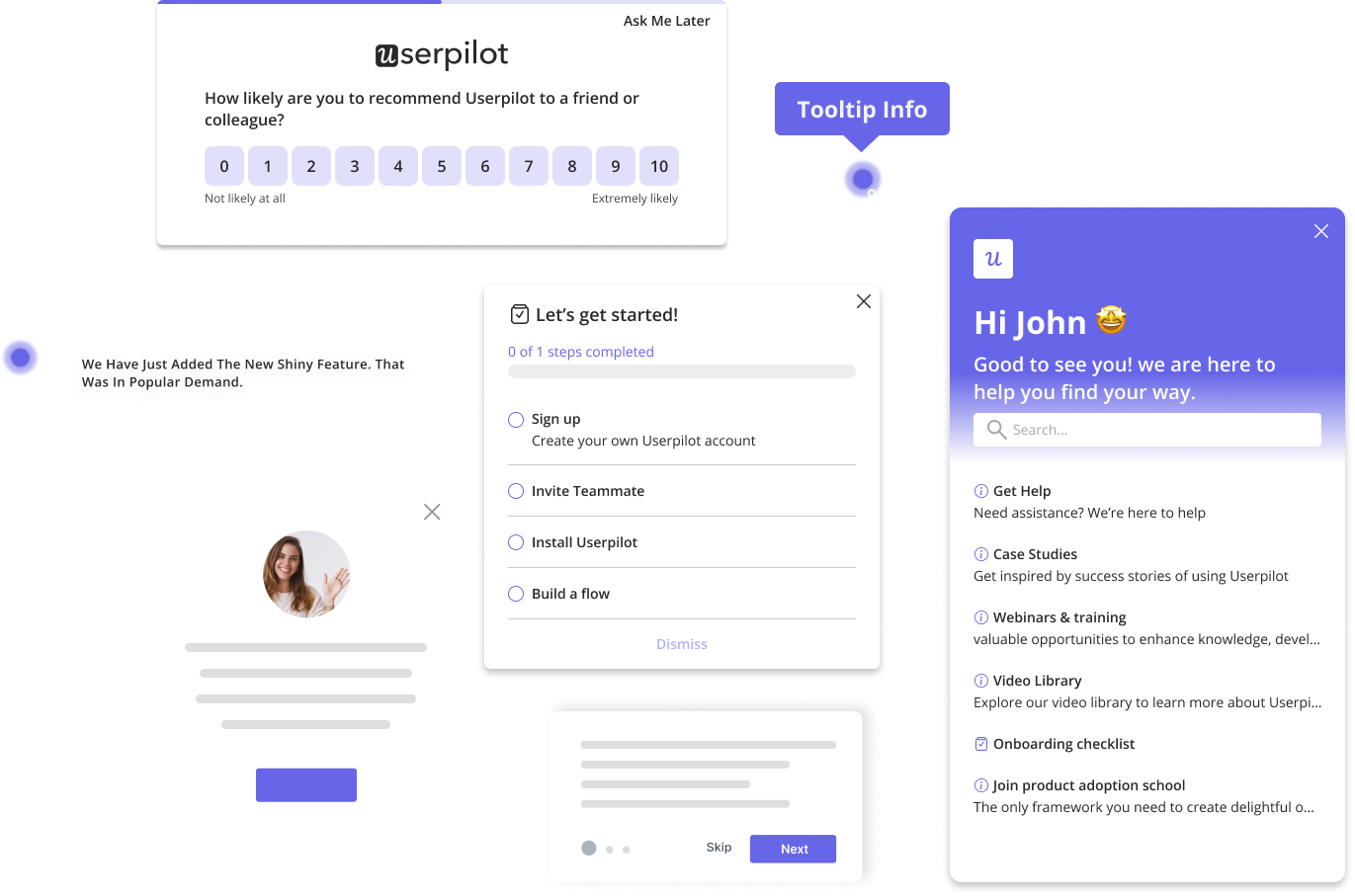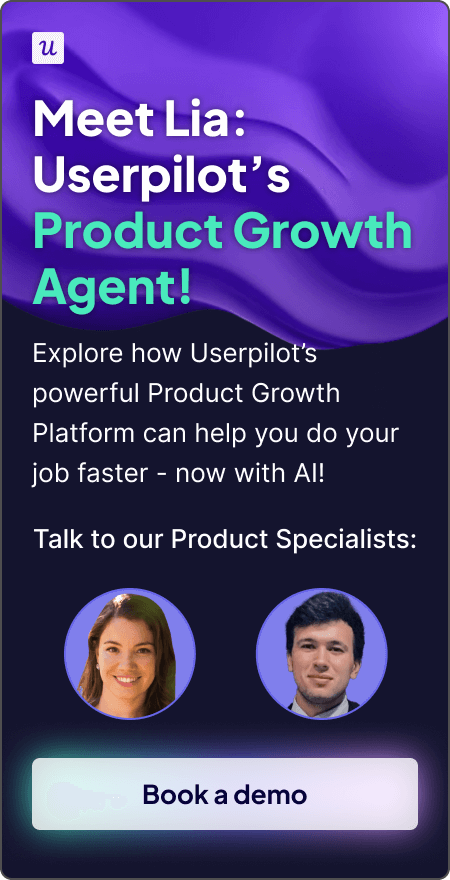How Can PMMs Build a Multi-Channel Product Marketing Growth Engine
Product Marketing Managers sit at the intersection of product, marketing, and sales. They translate product value into positioning, messaging, and go-to-market strategies, ensuring the right customers understand and adopt the product.
However, having coached over 200 PMMs and spoken to hundreds more, it’s clear that many PMMs struggle to connect their work to measurable business outcomes. They operate in silos, focused on messaging, enablement, and launches, without fully leveraging multi-channel strategies to drive growth. This makes it harder to prove impact and drive adoption.
To be a high-impact PMM, you must think beyond isolated tactics and understand how to build a multi-channel product marketing growth engine.
Try Userpilot Now
See Why 1,000+ Teams Choose Userpilot
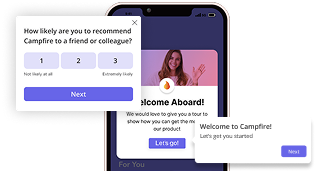
What is a multi-channel product marketing growth engine?
PMMs who understand growth don’t just execute individual tactics: they build a multi-channel growth engine that integrates acquisition, retention, and monetization strategies across multiple teams and channels to drive sustainable business impact.
A growth engine isn’t about one-off campaigns; it’s about creating a repeatable, scalable process that moves prospects through the funnel using a combination of channels, tactics, and cross-functional collaboration.
Let’s break down exactly how PMMs can build this kind of system.
Understanding growth: The three key levers
Growth expert Elena Verna describes growth as “your ability to predictably, sustainably, and competitively answer the question of how you acquire, retain, and monetize customers.”
To drive growth, businesses pull three core levers:
- Acquisition: Bringing in new customers through awareness (top of the funnel), engagement (middle of the funnel), and activation/purchase (bottom of the funnel).
- Retention: Keeping and expanding existing customer revenue through product improvements, service enhancements, and loyalty strategies.
- Monetization: Optimizing how customers are charged to maximize revenue and profit.
While these levers are often discussed in a product-led growth (PLG) context, they apply to nearly every business model. Most companies, regardless of industry, use a mix of tactics across sales, marketing, and products to drive sustainable growth.
For PMMs, understanding these levers is crucial. PMMs who grasp growth mechanics can better align their strategies with company objectives, collaborate cross-functionally, and ultimately become more valuable leaders.
I built the tactics table below to use as a guide. Note that this is not exhaustive, and some tactics will fall into multiple buckets across teams.
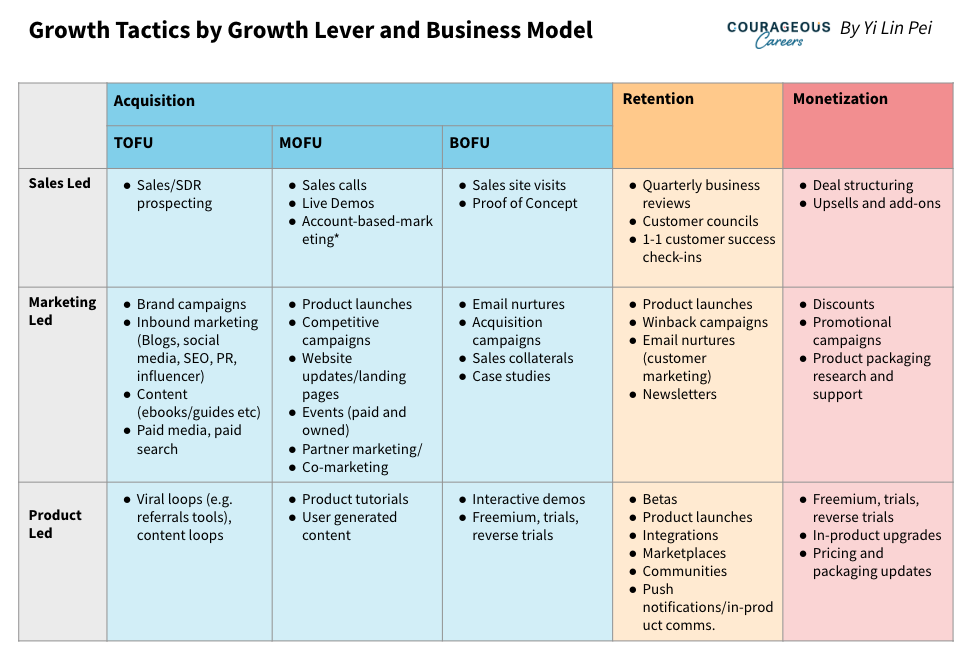
Operationalizing growth tactics in a multi-channel marketing plan as a PM
Understanding growth levers is just the first step. The next challenge is: How do PMMs take this knowledge and translate it into a scalable, multi-channel system?
According to the book LOVED: How to Rethink Marketing for Tech Products by Martina Lauchengco, product marketing’s work is most effective when embedded into larger marketing plans. Whether PMM reports into marketing, product, or elsewhere, ensuring that GTM strategy is integrated into broader marketing efforts helps bridge the gap between product and marketing execution.
To operationalize this, here’s the quarterly planning process I used as a PMM leader (and the process I coach my clients on) to ensure our team’s work was fully embedded in marketing plans. I will also use a real example to illustrate each step.
Learn More from the Interview with Yi Lin.

Step A: Identify the key growth lever to focus on
Rather than trying to tackle multiple growth levers at once, it’s best to prioritize one key lever and funnel stage each quarter for the biggest impact, especially given the limited resources most PMM teams have. This doesn’t mean your team will focus solely on this, but it will be the primary priority.
Let’s use the example below to illustrate how to determine this step.
👉🏻 Example: A B2B SaaS company wants to reach $20M in revenue by improving pipeline conversion.
- Key growth lever: Acquisition (driving pipeline and improving its conversion rates).
- Biggest drop-off point: Leads enter the funnel but fail to convert into accepted opportunities.
- Priority focus: Optimize mid-funnel strategies to increase lead to opportunity conversion rates.
In this example, by focusing efforts on mid-funnel lead to opportunity conversion, the PMM team can ensure that their efforts align with driving pipeline efficiency.
Step B: Use the PMM framework to map out the product marketing strategy
Now that we’ve identified the key growth lever and the funnel stage to focus on, the next step is to determine the right strategy to address it.
It’s crucial to revisit the core gap or challenge identified in Step A using the PMM framework. This ensures we address any foundational issues before layering on tactical solutions.
👉🏻 Example: Using the same example as before, where the challenge is that leads aren’t converting into opportunities. Upon investigation, you identify two possible root causes:
- Low lead quality: If the leads coming in aren’t the right fit, the priority should be refining the audience. This means better defining the ICP, tightening qualification criteria, and improving lead selection to ensure higher-quality prospects.
- Good lead quality, but poor conversion: If the leads are qualified but still not converting, the issue likely lies in nurturing and segmentation. A one-size-fits-all approach to messaging won’t resonate. Leads need to be segmented more effectively, with tailored, compelling messaging that speaks to their specific needs and pain points.
By first diagnosing the underlying issue, you ensure that your strategy directly addresses the most impactful roadblocks, setting the stage for effective growth execution.
Step C: Choose the growth tactic to double down as a big bet
With a well-defined strategy in place, the next step is selecting growth tactics that align with the company’s business model and strengths. Rather than defaulting to random tactics, it’s essential to leverage existing capabilities for maximum impact. The growth tactics table before can help inform exactly what to use, by growth lever and funnel stage.
👉🏻Example: Let’s say the company has historically been marketing-led and has a strong lifecycle marketing team with a proven track record in email marketing. In this case, a powerful channel growth tactic could be creating and implementing a segmented email campaign. This could include the following channels:
- Email nurture and campaign to a segmented audience.
- Email retargeting, to reach audiences that showed interest.
In which case, how you can directly contribute could include:
- Better ICP and segmentation: Ensure the right audience is targeted for better lead qualification.
- Optimize messaging: Provide key insights to craft compelling, conversion-driven email sequences.
- Collaboration: Work cross-functionally to align lifecycle marketing efforts with broader growth goals.
By strategically contributing your expertise, you position product marketing as a key driver of business growth, without having to reinvent the wheel.
Step D: Complete the rest of the marketing plan with additional tactics
With a solid strategy and tactics in place for the key growth lever, you can now apply the same structured approach to build out the full marketing plan – mapping each lever to the right tactics. The final output can then be visualized in a funnel.
👉🏻Example: Imagine the same company from before determined that retention should be their second priority focus after acquisition. Through careful analysis of user behavior data, you discover that customers who failed to adopt the platform’s e-commerce features had a 65% higher churn rate.
This insight led you to develop a targeted strategy:
- Growth lever: Retention (through increased feature adoption).
- Identified problem: Customers are not adopting key e-commerce features of the product.
- Priority focus: Improve education on feature value and reduce adoption friction to drive retention.
- Channel strategy: Deploy multi-channel approach using:
- In-app communications (tooltips and guided tours).
- Video tutorials for visual learners.
- Live masterclasses for comprehensive education.
- Self-service learning resources for independent exploration.
- How you contribute:
- Better product/feature messaging to craft compelling in-app copy.
- Leading training sessions/tutorials by sharing product expertise.
- Working cross-functionally with customer success teams to reach retention goals.
You then integrate this retention strategy into a comprehensive funnel visualization (the illustration below keeps things at a higher level).
This funnel visualization serves as a powerful alignment tool, ensuring the entire marketing team is on the same page. It clearly illustrates PMM’s impact, how each initiative connects to specific channels, and provides a measurable framework for tracking success.
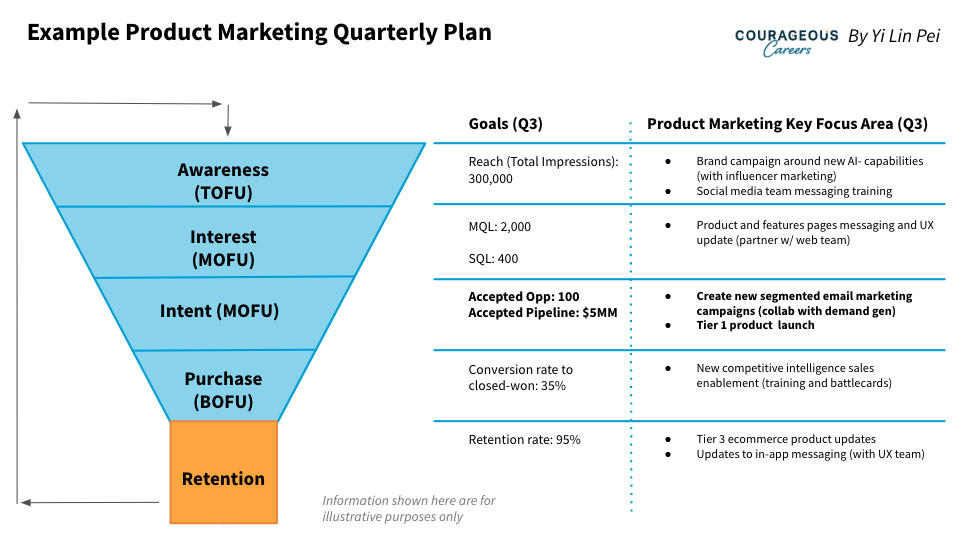
A final word
By applying this process quarter after quarter, you’re not just optimizing marketing execution, you’re building a multi-channel product marketing growth engine that drives sustainable business impact. With many PMMs unable to align themselves to revenue or business outcomes, this process also ensures the contributions of the PMM team are easily seen and understood.
PMMs who master this approach position themselves as strategic leaders, whether aiming for a Director of PMM, VP of Marketing, or CMO role.
If you are interested in becoming a high-impact PMM leader, or training/growing your team, reach out to me any time for coaching/training services.
Don’t Miss Out on Expert Knowledge That Keeps You Ahead.


